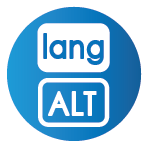3rd Grade Common Core: 3.MD.2
Common Core Identifier: 3.MD.2 / Grade: 3
Curriculum: Measurement And Data: Solve Problems Involving Measurement And Estimation Of Intervals Of Time, Liquid Volumes, And Masses Of Objects.
Detail: Measure and estimate liquid volumes and masses of objects using standard units of grams (g), kilograms (kg), and liters (l).6 Add, subtract, multiply, or divide to solve one-step word problems involving masses or volumes that are given in the same units, e.g., by using drawings (such as a beaker with a measurement scale) to represent the problem.7
31 Common Core State Standards (CCSS) aligned worksheets found:
Calculate the correct mass amounts to make the scales balance.
Level:
Filing Cabinet
Logged in members can use the Super Teacher Worksheets filing cabinet to save their favorite worksheets.
Quickly access your most used files AND your custom generated worksheets!
Please login to your account or become a member and join our community today to utilize this helpful feature.
Four critical thinking questions about measurement with liters and milliliters.
Level:
Determine the correct weight amounts (lb and oz.) to make the scales balance.
Level:
This worksheet has a variety of types of questions involving converting pints, cups, quarts, and gallons.
Level:
On these printable activities, your class will write repeated addition number sentences, complete addition/subtraction bar models, interpret a line plot, interpret a pictograph, and draw hands on an analog clock.
Level:
On these worksheets, your students will be asked to find the area and perimeter of a rectangle, find the capacity of two graduated cylinders, and complete some input and output boxes.
Level:
Within this set of daily math review you will find
3-digit by 3-digit subtraction, multiplication problems, word problems, weight, and division problems.
3-digit by 3-digit subtraction, multiplication problems, word problems, weight, and division problems.
Level:
Practice converting between cups, pints, quarts, and gallons. The worksheet includes two word problems.
Level:
This daily review set has more patterns, clocks, and base-10 place value blocks. There are also questions about capacity and calendars.
Level:
Determine how much liquid is in each of the two beakers and subtract to find the difference. Solve multi-step problems using knowledge of the four operations. Divide $20 equally among four children.
Level:
Gallon Bot Picture FREE
A single-page GallonBot picture that students can color and use as a reference.
Level:
These mixed-scale cylinders do not feature decimal numbers.
Level:
Convert from milliliters to liters and vice-versa; Easy conversions do not include decimal numbers
Level:
The scale of these graduated cylinders counts by 1s, which means students will need to use a decimal answer.
Level:
Assemble a large GallonBot figure; Sometimes referred to as Gallon Man, Measurement Man, or Mr. Gallon.
Level:
How many milliliters of water is shown in each cylinder? The scale counts by 100s.
Level:
Write the amount of liquid shown in each graduated cylinder. The scale counts by 5s.
Level:
Use the "greater than" and "less than" symbols to compare measurements in feet and inches.
Level:
Determine which of the amounts given is the larger one. (example: 8,000 mL or 80 L?)
Level:
Students are required to calculate equal amounts, compare capacity amounts, and solve a word problem.
Level:
Advanced capacity questions require students to calculate to the nearest half units.
Level:
These graduated cylinders feature mixed scales, including 100s, 10s, 5s, and 1s. Some answers will be a decimal number.
Level:
Use subtraction to calculate the increase or decrease of liquids in the graduated cylinders.
Level:
In & out boxes and word problems for converting to and from milliliters and liters
Level:
Add, divide, and/or subtract to find the volumes of these graduated cylinders.
Level:
Use the picture of GallonBot to answer the questions about gallons, quarts, pints, and cups.
Level:
Look closely at each graduated cylinder picture and write the volume of water each contains. This worksheet includes graduated cylinders that count by 10s.
Level:
Set of four measurement bookmarks for reference. Includes linear measurement (standard and metric) and capacity.
Level:
Convert to and from milliliters and liters; Advanced conversions include decimal numbers
Level:
Students use their knowledge of capacity to answer the questions.
Level:
Same as above, but a little more difficult. Students are required to compare multiple gallons, quarts, pints, and cups.
Level:











